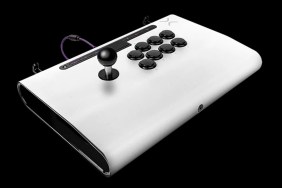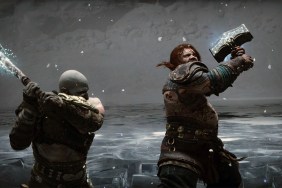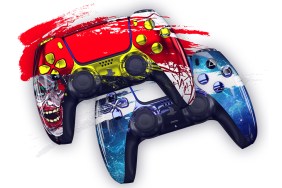Godzilla Vs. The Xbox.
Ethical quandaries are nothing if not entertaining. For example, if I could summon
a horde of rats whenever I wanted, but had to keep their voracious appetites sated
with human flesh, would I still want the horde of rats? Or, if I were a giant
fire-breathing lizard, would I rather be the kind that destroyed humanity, or
the kind that saved humanity from destruction? While I’ve never come to a satisfactory
answer regarding the rat question, Atari has helped me answer the fire-breathing
lizard one. I’d be both.
 In
In
Atari’s Xbox port of Godzilla: Destroy All Monsters Melee, you can
protect the cities of the earth while demolishing them with any of several classic
Godzilla monsters. Even though there were some things wrong with the Gamecube
version that haven’t been fixed here, nothing that was done right was
broken, either.
The story begins with those annoying
Martians (you know, the ones who were vulnerable to fire-alarms) attempting
to subjugate Earth by taking control of all the monsters on Monster Island.
And then, the story ends. It picks up again at the end of the game with the
Martians fleeing in their spaceships, cursing the monster that eluded their
mind-control and whupped every other monster’s ass. There you have the entire
story arc of Adventure Mode, the single player mode that allegedly has a storyline
and through which you unlock all the levels and monsters.
While Godzilla movies weren’t known for their intricate plots or character
development, they were over-the-top and had tons of character. Godzilla:
DAMM misses this and sets up the fights without any context or cinematics
or story, or any other nerdy details that a fan like myself might enjoy. Where
are Mothra’s singing midget girls? What
about some underwater
battles? The time spent on setting up the battles and giving them relevance
beyond the bare bones “Get ready to kick some monster ass!” is pretty much zero.
While Godzilla: DAMM includes Godzilla, it is not Godzilla.
The battle mechanics are entertaining, but as shallow as they were on the
Gamecube. In fact, nothing has changed. There’s a punch button, a kick button,
and another miscellaneous attack button (which is usually for tail attacks or
some other harder, slower attack). Jamming on any of the buttons results in
a combo, and holding the analog stick in a given direction affects the nature
of the attack (say, a hammer-fist as opposed to an uppercut in cases where the
punch button is depressed). There are also buttons for blocking, ducking, running
and jumping, and each has its uses.
 There’s also a projectile button, which when held and released charges and
There’s also a projectile button, which when held and released charges and
fires a monster’s projectile attack, and when tapped unleashes a devastating,
energy-consuming attack. Also, every monster has the ability to pick up certain
buildings and hurl them at their foes. Players can also hurl opposing monsters
into buildings, resulting in damage to the monster and the destruction of the
building.
However, the environments could have been even more interactive and the visual
destruction even more impressive. For example, if a monster is hurled into a
building, the building appears unaltered until moments later when it crumbles.
Buildings don’t fall into other buildings, no buildings become towering infernos,
and no monsters get buried under debris. Still, as the match progresses, the
cities (including Tokyo, London, San Francisco and others) become more and more
decimated. As cities get destroyed, the military becomes more aggressive, but
their assault never seems to measure up to the damage meted out and the tanks
and choppers never become more than a nuisance.
In the Gamecube version, the only vehicle that ever registered damage was the
little freeze-ray cannon that would freeze your monster, leaving him vulnerable
to attack. The irrelevance of the choppers and UFOs was never very obvious because
you were always focused on a monster. However, in the Xbox iteration there is
a new “Destruction Mode” in which you and potentially some friends
destroy cities to rack up points. This can be entertaining, but the lack of
any military presence is painfully obvious when there are no other monsters
around. If there were troops, more tanks, choppers, planes and boats firing
all sorts of grade-A hell at Godzilla, every level in the game would have been
more interesting.
The
gameplay is generally well implemented, especially as far as Godzilla himself
is concerned. None of the other monsters seem as balanced or fun to play; but
then, Godzilla is also a way cooler character than Megalon or King Ghidora or
Rodan. The problem here is that the control scheme for every monster is identical,
whereas the monsters are extremely different. The scheme fits Godzilla perfectly
with his punches and kicks and flame breath, but seems out of touch with characters
like King Ghidora or Rodan who rely on flying attacks and breath attacks.
The melee aspect of Godzilla is enjoyable, but a little too slow to
entertain a party of people. The rounds tend to be long and the action repetitive.
The game specifically lacks a certain ‘oomph’, which could be made up for by
more explosive special attacks.
For example, there are icons that can be grabbed by players to bolster health,
energy, Mothra (Mothra attacks everyone but the person who grabbed the icon)
and Rage. These rage attacks should be pure insanity, yet they are basically
attacks that affect everything within a certain radius of the player for moderate
damage. Godzilla emits a shockwave, which looks boring, doesn’t hurt much, and
doesn’t seem based on anything in any Godzilla movie ever. These Rage attacks
should be twice as powerful, twice as cool looking, and twice as frequent to
keep a good melee snappin’.
The levels could use a little help, too. Two new arenas are in this version
– the Vortaak Home World and a barebones Boxing Ring – but neither offers much
different in terms of gameplay. They’re all still flat, and the only truly
interactive objects are buildings. These are fun to throw at people and to throw
people into, but how about some exploding volcanoes or gas stations? How about
grabbing chunks out of buildings and hurling those? There are thousands of possible
improvements because the interactivity in the levels is so basic. And don’t
even get me started on the weird Green Grid that acts as a boundary. Half the
time it’s invisible, and if you touch it it stuns the crap out of you. The most
awful things can happen if you run into this stuff; I’ve lost half my health
to Destroyah (who is by far the most powerful, cheapest character) in one session
on the neon electro ropes, and I was never even able to move.
 Despite the change in systems, the graphics still aren’t great. The monsters
Despite the change in systems, the graphics still aren’t great. The monsters
look halfway decent (Godzilla 2000 looks the best), but are still weakly textured
and suffer from mediocre animations. The cities all look the same, the collapsing
buildings look awful, and there aren’t enough flashing lights and explosions.
However, most of the breath attacks look cool and the hit detection is generally
better than average, which lends a convincing appearance to most of the fights.
The game’s sound is equally mediocre. The creature roars are spot-on and creepy,
but the awesome, original
Godzilla theme is absent and the sound effects are generally weak. At least
you can use your own music this time around.
I was hoping that the Xbox version would be a vast improvement over the Gamecube
version, but it’s not. However, giving this game a second shot reminded
me how simple and fun it is in spite of all its shortcomings. Kicking monster
ass as Godzilla definitely has its moments, and if you haven’t played it
yet, you could do worse than give it a rental. The hard part – making a fundamentally
sound game – is complete. Here’s to hoping Atari goes the extra mile and
makes a sequel with all the goodness this game lacks. King Kong, perhaps?
-
Godzilla kicks butt!
-
Decent fighting system
-
Destroy cities!
-
Shallow fighting system
-
Easy to get stuck
-
Sorta
-
Not much has changed since GC version










